Cafeterias
When Los Angeles was young at heart, cafeterias were stylish. They had first appeared in several American cities around the turn of the century; but by the mid-1920s there were so many on the West Coast that they were known as "California-style" restaurants, the modern way to dine. And in that era of Art Moderne, or Art Deco, some were built like majestic movie palaces, with Byzantine-style façades, painted ceilings, and dramatic murals on the walls—grandiose environments, but not forbidding in the way a high-toned Delmonico's might be. The dining public considered cafeterias to be friendly sorts of places. They felt democratic: Ordinary Joe and Jane stood in line and served themselves right alongside Mr. Wellborn and Mrs. Toplofty; no one was abused by elitist maitre d's or arrogant waiters, and the socially insecure didn't have to worry about such discomforts as menu deciphering and tipping. Cafeterias were also touted as particularly healthful because their food was displayed openly on gleaming stainless-steel trays so a customer could see exactly what was being offered. Clean and wholesome, open to one and all, self-service dining establishments embodied the fresh disposition of the City of Angels.
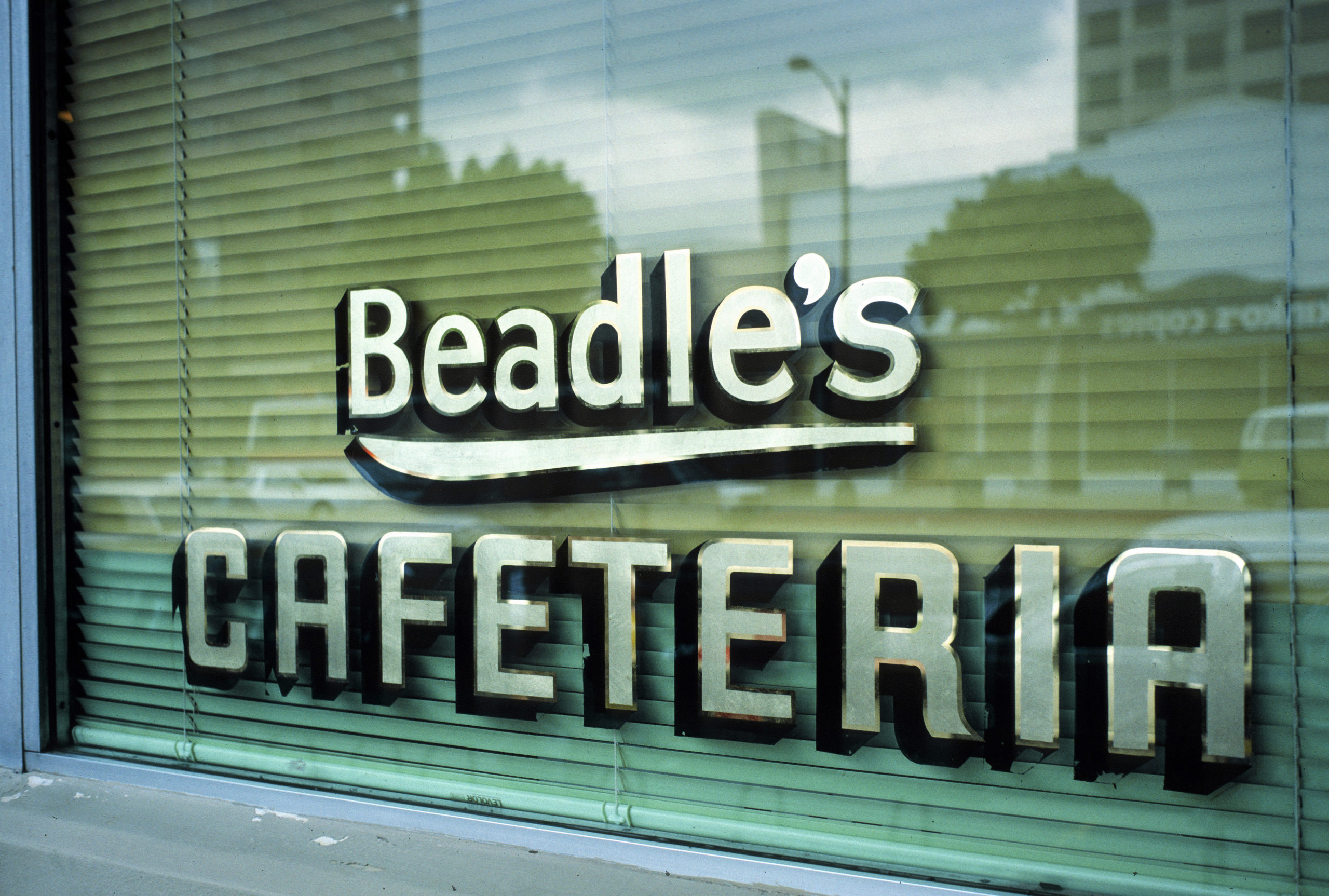
By Jane and Michael Stern
Originally Published 1995 Gourmet Magazine
When Los Angeles was young at heart, cafeterias were stylish. They had first appeared in several American cities around the turn of the century; but by the mid-1920s there were so many on the West Coast that they were known as “California-style” restaurants, the modern way to dine. And in that era of Art Moderne, or Art Deco, some were built like majestic movie palaces, with Byzantine-style façades, painted ceilings, and dramatic murals on the walls—grandiose environments, but not forbidding in the way a high-toned Delmonico’s might be. The dining public considered cafeterias to be friendly sorts of places. They felt democratic: Ordinary Joe and Jane stood in line and served themselves right alongside Mr. Wellborn and Mrs. Toplofty; no one was abused by elitist maitre d’s or arrogant waiters, and the socially insecure didn’t have to worry about such discomforts as menu deciphering and tipping. Cafeterias were also touted as particularly healthful because their food was displayed openly on gleaming stainless-steel trays so a customer could see exactly what was being offered. Clean and wholesome, open to one and all, self-service dining establishments embodied the fresh disposition of the City of Angels.
Los Angeles has aged considerably since then, and the image of cafeteria meals has been blemished in many people’s minds by Army mess and school lunch. But, amazingly, the city still has a handful of truly delightful cafeterias. The guileless fare they serve is a reminder that there was California cuisine long before the discovery of goat cheese.
The best of them is in Pasadena, just off Colorado Boulevard, and it isn’t even very old. BEADLE’S has been roasting leg of lamb and baking mocha-whipped-cream angel food cake a mere forty years. The cafeteria line is a showcase for square meals of which Dragnet’s Sergeant Joe Friday would have approved: pot roast with potato pancakes every Wednesday and Saturday, chicken pot pie and baked ham Sundays, baron of beef Mondays and Fridays. Hash—beef, turkey, or corned beef—is often on the menu. Roast turkey with sage dressing, mashed potatoes, and gravy is served five days a week. “People seem to expect Thanksgiving dinner when they come to Beadle’s,” explains manager Jane Arvizu as she watches a customer vacillate between colorful confetti Jell-O and carrot raisin slaw and finally choose both.
Ms. Arvizu’s parents, Helen and Gordon Hammond, have run Beadle’s since they bought it from Earl Beadle in 1967; until this year Mr. Hammond was omnipresent in the dining room (now, at the age of 83, he comes in “just six days a week”). A cafeteria man all his life, he taught his daughter the value of consistency. Generations of Pasadena families have dined at Beadle’s, and they know exactly what they will find. A few times a week, one woman, aged 101, goes through the line, fills her tray, and then marches to her usual table. If it is occupied, she bangs on it with her cane. If the people don’t move, she joins them. “Last Tuesday we served lentil soup,”‘ Ms. Arvizu says. “I had customers coming up to me all day asking, ‘Where’s my chicken noodle?'” Tuesday has always been chicken noodle soup day here.
“One thing we would never change is macaroni and cheese,” she assures us. “Our customers demand it at every meal.” Exemplary macaroni and cheese it is: buttery noodles in a cream-smooth béchamel hefted by the ladleful from a serving pan, each portion containing a few dark orange patches of chewy Cheddar from the top of the batch. “We still make chicken croquettes regularly and baked apples between October and May, and our recipe for lemon chess pie goes way, way back. We have tomato aspic every day, and we do plenty of custard, which you can’t find much anymore—rice-raisin, bread custard, Grape-Nuts custard, and custard pie. I can’t tell you how many people I meet who tell me they come to Beadle’s because it reminds them of what their grandmother cooked. If you are looking for normal American food, here it is.”
For the flavor of vintage Los Angeles, COLE’S P. E. BUFFET is the place to go. Billing itself as the oldest restaurant and saloon in town (open since 1908), it is a genuine hole-in-the-wall, down a flight of stairs, with sawdust on the floors and the aroma of a million steam-table meals perfuming its wood-paneled walls. The decor includes panoramic photos of Miss California contests held long ago in the Santa Monica sun, as well as an honor roll above the bar entitled “The Professionals” and listing the names of a couple dozen loyal customers who have made the old haunt their home away from home. The cash register at the end of the cafeteria line is the original (its keys go only as high as $9.99), and there is one table that always has a RESERVED sign on it—for police officers who favor the robust food and neighborhood air of this landmark. Tables in some of the cloistered back dining areas are made of oak salvaged from the sides of Pacific Electric Railway Red Cars, source of the P.E. in Cole’s name. When the cafeteria opened, and until the Red Cars ended service in the early 1960s, its clientele was mostly commuters traveling what was, in pre-freeway days, the world’s largest interurban rail line.
Today’s customers pile trays with the hot lunch of days gone by: platters of corned beef and chunky cabbage wedges, beef stew, kielbasa and kraut, and slabs of roasted ham, pork, and beef. Cole’s specialty is a sandwich the place claims to have invented, which has since become popular throughout the West: the French dip. The story told here is that, shortly after Cole’s opened for business, a customer in the buffet line wanted a beef sandwich but feared he couldn’t bite through the crusty roll on which it was served. Chef Jack Garlinghouse sliced the roll as usual, but before he loaded it with beef he dipped each half in the pan of natural gravy where the beef sat. The gravy softened the bread … and the French dip sandwich was born.
It is a splendid concept, particularly well-executed by Cole’s carvers. When you request a French dip, the man in the toque forks a slab of hot brisket from the steam box, hand-slices a mound of thick, juicy pieces, and then spears each half of the sliced roll and holds it in a pan of dark gravy long enough to fully flavor the soft part of the chewy bread but leave the crust crisp. The result is a delicious mess. At the tables, glass jars hold fierce mustard—the tender French dip’s ideal complement.
PHILIPPE THE ORIGINAL is another venerable cafeteria founded in 1908 that claims to have invented the French dip. The story at Philippe’s (pronounced Phil-ee-peez) is that a carver accidentally dropped a sliced roll in beef gravy and the customer was in too much of a hurry to wait for another roll to be cut, so he took the sandwich “wet.”
In 1951, when the Hollywood Freeway was built, Philippe’s moved four blocks east from its downtown home; the new location is as comfortable as an old shoe: saw-dust-strewn floors, communal tables, nine-cents-a-cup coffee, and fine French dip sandwiches with roaring-hot mustard on the side. Still on the menu are pickled spiced eggs, hard-boiled and displayed at the carving counter in big glass jars of pink beet juice, and pigs’ feet. John Binder (co-proprietor with his brother Richard) boasts that Philippe’s prepares all its feet from scratch and moves at least three hundred per week.
As Caroline Bates wrote in these pages in January, 1991, restaurants like Philippe’s provide “a sense of continuity and of precious community.” It is as good a people-watching place as Spago, but instead of movie stars you see the Angelenos that Raymond Carver wrote about—municipal employees from the nearby post office and courthouse as well as Santa Anita touts who frequent the bank of old wooden phone booths, racing forms in hand. “We got the Rodney King jurors on a few occasions,” Mr. Binder recalls. “They came during lunch hour, and we sequestered them in an upstairs dining room. Let me tell you though, you wouldn’t want to be judged by them. They had real attitudes. They always demanded extra cups of gravy. I said, ‘You can’t talk to me. You want more gravy, tell your bailiff.’ ”
Of all the cafeterias in Los Angeles, CLIFTON’S down-town on Broadway is the most eye-popping. Built to represent the Golden State’s redwood forests, its interior decor includes “granite” cliffs and boulders, babbling brooks, walls that resemble tree trunks, and stunning (if faded) murals of forest scenes. The cafeteria selection is immense—fried chicken with buttermilk biscuits, oxtail stew, turkey and dressing, side dishes ranging from whipped or fried potatoes to “cranberry jewel gelatin,” and cheerfully corny desserts such as fruit cocktail torte and strawberry pie. For those with fond memories of school lunch, Clifton’s also offers grilled cheese sandwiches cooked crisp and pressed flat as a pancake.
We like this Clifton’s a lot—there are four other Clifton’s in town—but we are not so fond of its surroundings. When the cafeteria opened in 1935, Broadway was a fashionable thoroughfare. Today the street can be an intimidating place to walk, especially at night. Once you get to Clifton’s, though, you cannot help but love Los Angeles all over again, especially when you gaze down at the sidewalk below Clifton’s marquee. Here, a magnificent tile mosaic in a sunburst pattern shows the many scenic wonders that made southern California such an alluring place: the Rose Bowl, the Hollywood Bowl, the oil fields, the deserts, the missions, the movie studios, and Catalina Island. To walk across this magic picture, enter the redwood forest dining room, and tuck into a tray of meat loaf, mashed potatoes, and gravy, with millionaire pie for dessert (mounds of whipped cream, crushed pineapple, and pecans), is to taste an optimistic city where the world seems honest and new at every meal.
Beadle’s Cafeteria (permanently closed)
825 East Green Street
Pasadena, California
Clifton’s
Cole’s P. E. Buffet
Discuss
What do you think of Cafeterias?
Related Articles
Stroud’s
By Jane and Michael Stern Originally Published 1995 Gourmet Magazine Chicken...
The Lobster Roll Honor Roll
Maine is the only state in America that features a picture of cooked food on its license...
Meat-And-Three
A few years back, country singer Ray Stevens invited a New York friend to join him at one of...
Top 12 favorite Ice Cream Scoops
WITH THE EXCEPTION of the hot dog bun, there has never been an edible invention as...
Top 5 BBQ Restaurants | Western Kentucky
Get yourself to Western Kentucky for great BBQ I see the food shows on TV where...
Best restaurants in Greenwood, MS | Hot Licks Delta Style
Ever since we first ate margarine-sauced pompano at Lusco’s, in Greenwood,...

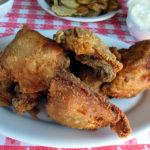
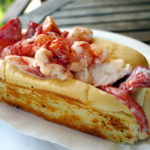
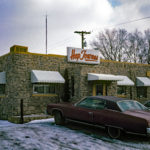
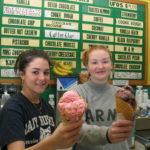
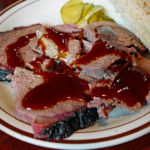
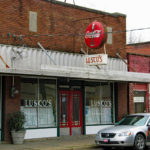
One Response to “Cafeterias”
Macaroni - Latitude 65 - Jubilados Savouring the Journey
September 30th, 2021
[…] Here’s the Stern’s review of Beadle’s, originally published in Gourmet magazine and reprinted in Roadfood. […]